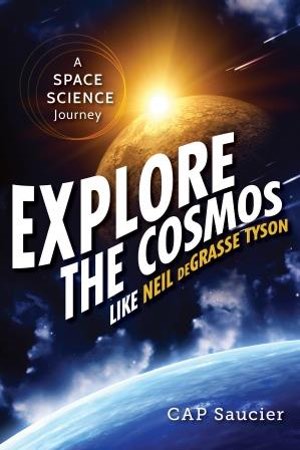Review: Explore the Universe like Neil deGrasse Tysonby Jeff Foust
|
| Much of the book, though, has little to do with Tyson. Instead, it’s a rather conventional overview of astronomy. |
The book is an unusual combination of biography of Tyson and an overview of astronomy. The book begins with a summary of Tyson’s childhood in New York, where his fascination with astronomy began with trips to the Hayden Planetarium and looking at the night sky from the roof of his apartment building in the Bronx. Towards the end of the book, Saucier returns to Tyson’s adult life and career.
Much of the book, though, has little to do with Tyson. Instead, it’s a rather conventional overview of astronomy, with chapters on the development of telescope and other tools of the astronomy trade, the formation of stars and galaxies, and the worlds of our own solar system. In these chapters, you can go pages without a reference to Tyson, and those references can be superficial: “Neil loves Saturn because of its beautiful rings,” is one example. To be fair, the book offers the reader the opportunity to explore the cosmos like Tyson, not with Tyson.
In one area where Tyson is perhaps best known—whether or not Pluto should be considered a planet—Saucier plays down his contributions to the topic, devoting only about a paragraph to it. Yet, his decision to not include Pluto in displays about the solar system’s planets at the Hayden Planetarium reignited the public debate about Pluto’s status at the turn of the century, several years before the IAU’s decision to reclassify the world as a “dwarf planet.” The debate—and Tyson’s career—might have evolved differently without that.
While not clearly stated on the book itself, Explore the Cosmos like Neil deGrasse Tyson is written primarily for children (Amazon’s page for the book lists it as targeted for grades 3 through 7.) It is presumably targeted at those kids who have heard of Tyson—perhaps from last year’s Cosmos TV series—and want to learn more about him and the science from that show. Perhaps one of those young readers will be inspired by Tyson’s story to pursue some of the astronomical topics described in the book. That may be the ultimate metric of whether or not this is a good book.
